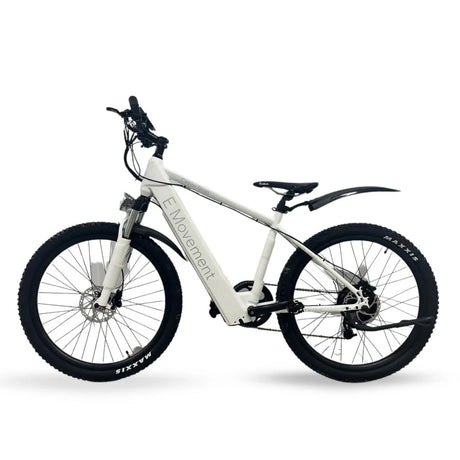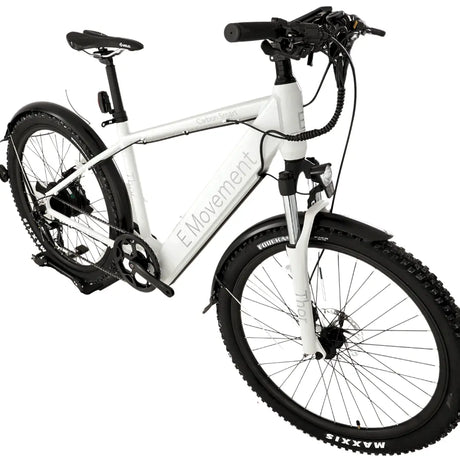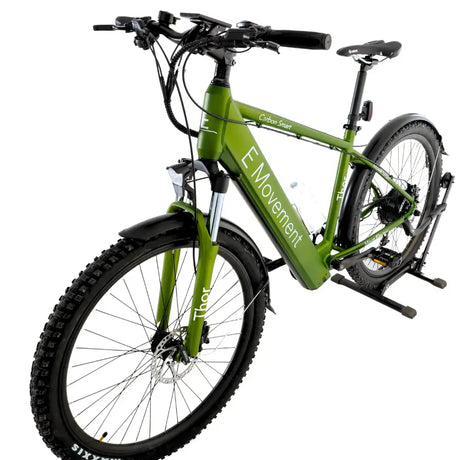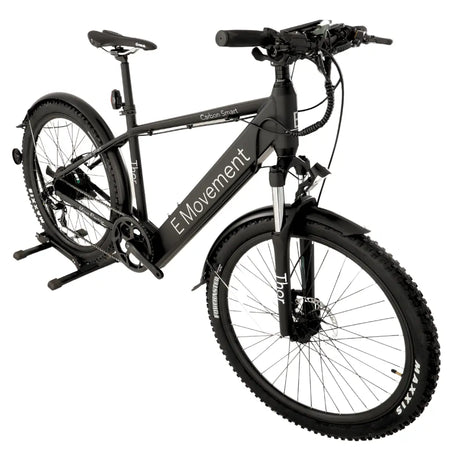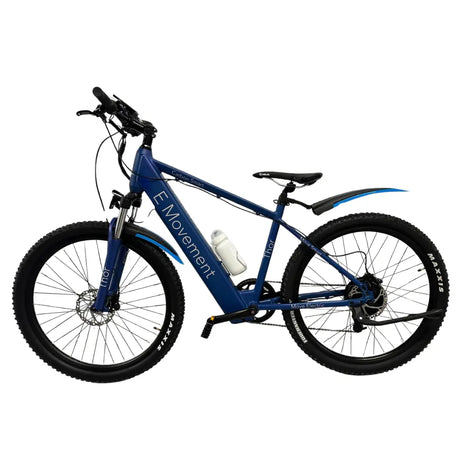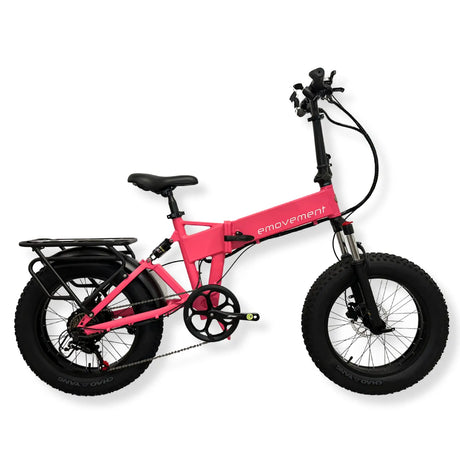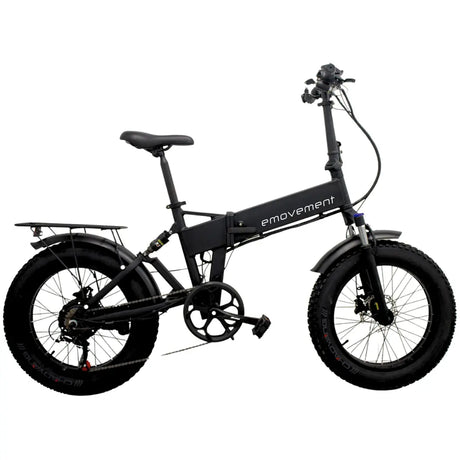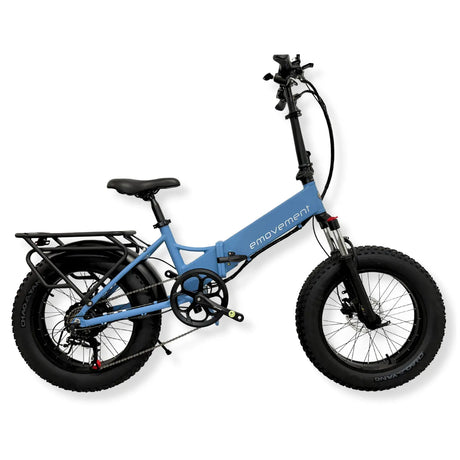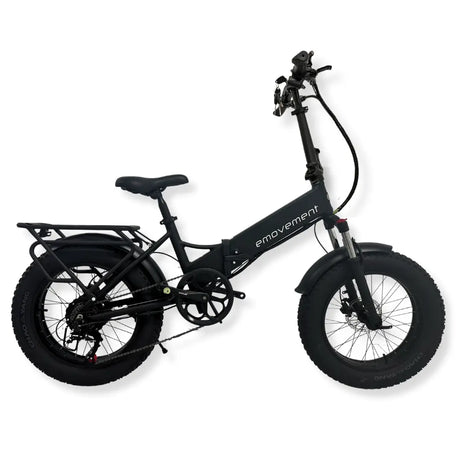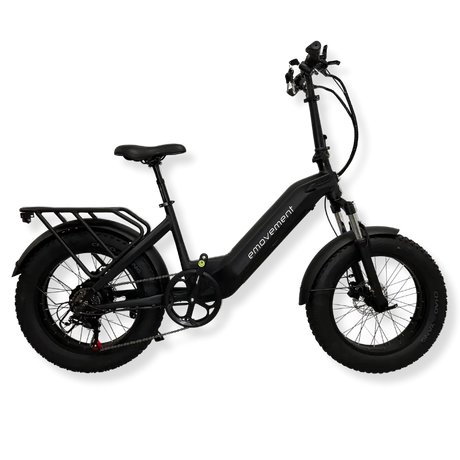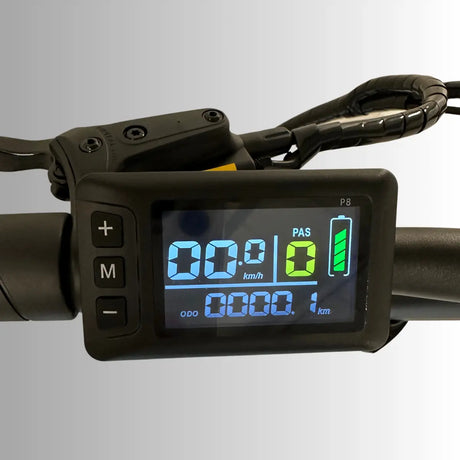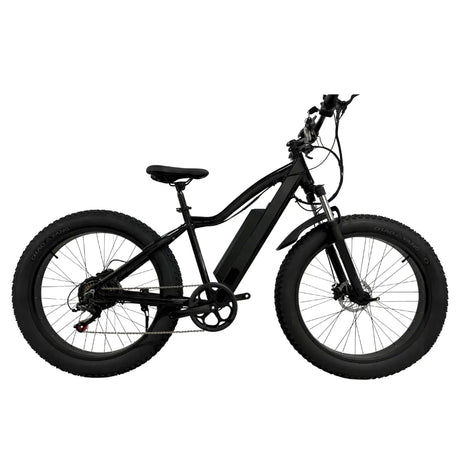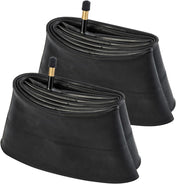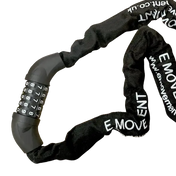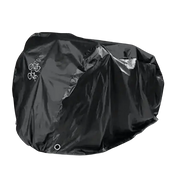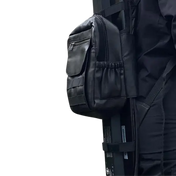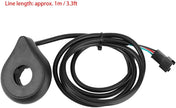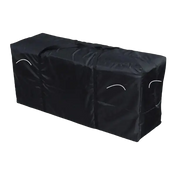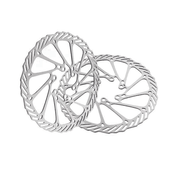If you’ve been eyeing cycles or electric bikes in the UK, you’ve probably heard of the Cycle to Work scheme. These incredibly beneficial government-backed initiatives aim to promote cycling for better health and the environment for UK residents.
Read on to understand the details of the Cycle to Work scheme for all its stakeholders in detail.
What is the Government Cycle-to-Work Scheme for Electric Bikes?
The UK government introduced the cycle-to-work scheme in 1999 to encourage more people to commute to work using bicycles as part of its green commute initiative. It’s a tax-efficient scheme that allows people to buy a bicycle and associated safety equipment through their employers, with a discount typically up to 42% which is deducted from the employee’s salary and paid over 12-18 months.
Benefits of the scheme include easy and more affordable commute to work, less reliance on public transport, reduced carbon footprint, savings and a healthier lifestyle. All employees (who pay income tax and national insurance contributions) in the UK can benefit from this scheme.
Let’s discuss the scheme in detail and see how you can get a cycle-to-work scheme electric bike. We’ll look at how the scheme works for employers, retailers, and customers, all.
The Cycle to Work Scheme and Employers
If you’re an employer, your role is critical in the ebike cycle to work schemes. After all, it all will begin only if you register yourself with a scheme provider.
Additionally, you’ll have to: promote the scheme, set up payroll deductions, decide the hire period, purchase the bicycles and safety equipment, and ensure employee compliance. May seem a lot on paper, but let is break down the steps for you:
Why Participate?
Here’s why you ought to participate in the government ebike scheme as an employer.
Benefits of the Cycle-to-Work Scheme for Employers
As an employer, offering this scheme can help promote your employees’ health and well-being. Such a green commute initiative can also reduce the overall carbon footprint because of less car usage. Research by CycleScheme showed that with a five-mile commute each way, your employee could benefit from total savings of more than £3,000/year by swapping their car for a cycle or an e-bike. Additionally, it can help save up on national insurance contributions and reduce the need for parking spaces. Lastly, it can promote a positive corporate image.
Tax Implications of the Scheme

The Cycle-to-Work scheme has a range of benefits for you as an employer. Not only are you playing your part in protecting the planet and your employee’s health, but you’re also cutting down on your costs in the form of tax benefits.
You can save up to 13.80% on National Insurance Contributions (NICs) by offering this scheme as a salary sacrifice arrangement. You can also recover the VAT on the bicycles and any safety equipment purchased as long as it was being used for business purposes.
Additionally, you can claim capital allowance/tax relief on the cost of administering the Cycle to Work scheme, including the cost of promoting the scheme.
How to Participate?
Let’s discuss the participation details.
Setting Up the Scheme
As an employer, you’ll first need to choose a provider. Some of the most popular schemes include CycleScheme, Vivup, Cycle Plus, the Green Commute Initiative (GCI), Cycle Solutions, and Bike2Work.
Here’s the government implementation guideline.
Then you’ll have to register for the scheme, approve an invoice and hire agreement along with the hire period for the purchase of bicycles and safety equipment, and lease the bicycle and equipment to the employee.
Promoting the Scheme
You can promote this scheme using internal communication channels, like email and newsletters from the HR department to your employees. The HR department can play a significant role here by making individuals understand the benefits of such a scheme.
You may also distribute information pamphlets, use social media to raise awareness, and encourage your employees to sign up by offering incentives such as free bicycle service or vouchers for e-bike equipment.
The Cycle to Work Scheme and Retailers

As a retailer, you can increase your sales by tapping into the large and growing market of working individuals who wish to cycle to work. You can not only attract new customers but also build long-term relationships with those who’d need regular maintenance and upgrades for their bicycles or electric bike.
There’s also reduced risk for participating in this scheme, as it’s managed by third-party providers who handle the administration and financing of the scheme.
Registering with a Cycle to Work Scheme Provider
You would need to choose one of the many electric bike Cycle to Work scheme providers in the UK and register as a supplier. After meeting the scheme criteria you can provide pricing information for their bicycles/electric bike and sign an agreement. Then you can simply start supplying bicycles and safety equipment to employees participating in this scheme.
Cycle to Work Scheme Criteria for Businesses/Retailers
The scheme criteria would include:
- Providing satisfactory customer service
- Offering a range of bicycles and safety equipment
- Upholding quality standards
Marketing Your Business
For successful marketing, it’s crucial to promote the benefits of cycling through various channels. Utilize social media platforms, post engaging blog posts, and other marketing materials to highlight the advantages of using a bicycle or electric bike.
Offering promotions and discounts also attracts customers. Active participation in bike rides and community festivals can provide a good opportunity to showcase your business and connect with potential customers. Such festivals include Prudential Ride London, Tour de Yorkshire, Wiggle Dragon Ride, TweedLove Bike Festival, and Bike Bath. Collaborating with influencers in the cycling community can amplify your brand’s reach and influence.
To ensure the long-term success of your business, it’s important to provide a diverse range of bicycles and safety equipment that cater to the needs of different types of cyclists. Excellent customer service is essential to build loyalty and positive word-of-mouth. Offering competitive pricing can also help attract customers. In the age of digital marketing, it’s important to be familiar with digital marketing techniques, such as search engine optimization (SEO), social media advertising, and email marketing.
Monitoring current trends in the cycling industry and adjusting your business strategy accordingly is crucial. Stay updated on emerging technologies, popular cycling destinations, and shifting customer preferences to position your business as innovative and relevant. Building relationships with employers can also help you enjoy success and secure a Cycle to Work scheme ebike. It’d help you open up opportunities for partnerships and increase your customer base.
The Cycle to Work Scheme and Buyers

If you want to purchase a bike through the Cycle to Work scheme, here’s what you need to know.
Eligibility for the Cycle to Work Scheme
Requirements of the Scheme
The Cycle to Work scheme is offered through employers so being an employee of a company registered with this scheme is necessary. Prior salary sacrifice and hire period agreement must be made with your employer to participate in the scheme and the bicycle should be used for work-related purposes only.
Who is Eligible to Apply for the Scheme
Employees need to be over 18 years old and working for a company registered for the Cycle to Work scheme with a salary sacrifice agreement with their employers to be eligible to apply for this scheme.
You would also need to be a UK taxpayer and pay tax through the PAYE system (Pay As You Earn) and must not already own a bicycle purchased through this scheme. You also need to be earning above the national minimum wage.
Limitations of the Scheme
You may also face a reduction in your net pay as a result of your salary sacrifice agreement and may also lose eligibility for other government benefits. Furthermore, if you earn near the national minimum wage you can’t access this scheme as a salary sacrifice would take your salary below the national minimum wage.
The scheme only covers certain types of safety equipment and other cycling-related expenses, such as repairs or maintenance are not covered. Additionally, the participants do not own the bicycle and the equipment until the end of the hire period which means they can not sell or dispose of the bicycle during this time.
How to Apply for the Cycle to Work Scheme as a Customer
Take the following steps:
I. Check with your HR department if they offer the Cycle to Work scheme and if they do, they’ll be able to provide you with more information on how to proceed.
II. Choose a bicycle that meets your requirements and falls within the scheme’s price limit.
III. Request a quote from the retailer that includes the total cost of the bicycle and safety equipment as well as any other fees.
IV. Apply for the scheme through your employer and fill out an application form that’d require the details of the bicycle/electric bike and the equipment you’ve picked.
V. Agree to a salary sacrifice agreement with your employer.
VI. Receive the bike and equipment and enjoy the ride!
Documents You’ll Need for the Application Process
Documents required for the application process include:
- Application form
- Quote from retailer
- Salary sacrifice and hire period agreement with your employer
- Employer confirmation
- Letter of collection from your retailer
- Identification documents to confirm your identity
Where to Apply for the Scheme
As an employee, you can apply for the Cycle to Work scheme through your employer registered with the scheme provider.
How to Find a Cycle to Work Scheme Retailer
Some of the major national retailers approved by most scheme providers include:
- E-Movement
- Halfords
- Evans Cycles
- Decathlon
- Cycle Republic
- Rutland Cycling
- Tredz
- Wiggle
- Chain Reaction Cycles
- Leisure Lakes Bikes
- Giant
- Trek Bike
- Specialized
You should check with your employer or scheme provider to check which retailers are approved for their scheme. You can also locate participating retailers through the website of the scheme provider your employer is registered with.
Picking a retailer close to home or work can be convenient when picking up the bicycle. Alternatively, online retailers also have a good range of bicycles and equipment you can benefit from.
Keep a look out for local retailers that offer additional services such as pre-assembled deliveries or bike fitting, servicing, repairs, and warranties which can be valuable. (Psst, we at E-Movement do that).
Selecting the Right Bike and Accessories
The types of bicycles available under the scheme depend on the retailer and scheme provider but usually, the following types of bicycles are available; road bikes, hybrid bikes, mountain bikes, folding bikes, and electric bikes.
Select a bicycle that is of the appropriate size, comfortable, durable, and ideal for commuting. For example, for longer distances or hilly areas, an electric bike with a solid motor and battery, might be more suitable. It’s important to take the bike on a test ride before committing to a purchase to ensure it fits your needs.
Let us run you through our e-bikes:
- If you’re a fan of fat-tyres, you can check E-Movement’s Panther, Pixie, Thunder, Hunter, Raven, or Aries.
- If you want a lightweight all-terrain road-master, choose our Thor.
- For lightweight road-bikes, you can check Troy Pro and Commute.
- If you want long-range, go for batteries rated 14Ah or higher. Our Pixie and Panther are rated 14Ah, Raven is 20Ah, and Hunter Extreme has 20Ah and a whopping 27Ah.
- If you’re of a smaller stature and would prefer an e-bike with low minimum height, you can go for Hunter Extreme 20Ah (4.8ft), Pixie, Raven(5.0 ft), or Troy and Commute (5.2ft).
- If you want full-suspension electric bikes, go for Commute or Panther.
- If you’re in for electric mountain bikes (eMTBs), we have Thunder, Aries, and Thor.
- If you want folding e-bikes, you can choose Panther, Pixie, Hunter, or Commute.
If your professional attire is tight or you feel discomfort with mounting bikes with high frames, look for bicycles with step-through frames, (our Hunter, Pixie, and Raven!).
Some accessories included in the scheme are helmets, lights, locks, reflective clothing, pannier bags, mudguards, and cycle clothing. The specific type of accessories available depends on the retailer or the scheme provider.
The Concept of Salary Sacrifice
As an employee, you can purchase a bicycle and related safety equipment in a tax-efficient way through salary sacrifice. Salary sacrifice deducts a certain amount from the employee’s salary for the duration of the scheme (12-18 months) in exchange for the bicycle and cycling equipment.
How Salary Sacrifice Works Under the Scheme
The amount of salary sacrifice is calculated based on the cost of the bicycle and the equipment, which is spread over the agreed period. It’s deducted from your gross salary before tax and National Insurance contributions are calculated.
So, if your salary is £60,000 and you purchase a bicycle (with accessories) worth £1,000, you would need to pay only £580 while saving £420 with a net salary deduction of only £48.33 over 12 months. You can calculate how much money you can save by using a savings calculator available on the websites of your scheme providers.
Tax Implications of Salary Sacrifice
The tax implications for employees participating in this scheme are generally positive because it can result in tax savings. After entering a salary sacrifice agreement, your gross salary is reduced and the amount of income tax and National Insurance contributions are based on the reduced salary amount. This would result in tax savings.
Repayment and Ownership

The typical scheme duration is 12-18 months but it can be extended up to 4-5 years.
Repayment options depend on the employer and the scheme provider however some options are; salary sacrifice, direct debit (automatic payments from their bank account), voucher scheme (some employers offer a voucher scheme which uses a voucher to pay for the bicycle and equipment), and lump sum payment (to purchase the bicycle and equipment at the end of the hire agreement).
You can choose to take ownership of your bicycle based on “fair market value”; so you may be asked to pay up to 25% of the market value of a bicycle costing more than £500 after 12 months.
Conclusion
To summarize, Cycle for Work is a UK government initiative, as part of their green commute initiative, to encourage more people to commute to work on bicycles in a tax-efficient way. Employers can register their companies with scheme providers and offer their employees an opportunity to save money on a bicycle and equipment through salary sacrifice and save up to 42% on the cost of the bike and equipment.
With the Cycle for Work scheme explained, you now know it is a great way to commit to commuting via a bicycle at a reduced cost. Enjoy cost-efficient commute and health benefits by applying to this scheme!
Common Questions
1. How much can I save with the Cycle to Work Scheme?
You can save 25-48% on a new bicycle for work. There are several online savings calculators (at Cycle Scheme, Bike2Work Scheme Halfords, Tredz, and other scheme providers and retailers) that will calculate the exact cost and savings for you. For example, on a £25,000 per annum salary and a bicycle and equipment worth £1,500, over 12 months you can save £498.72 by paying £83.44/month.
2. What happens at the end of the Cycle to Work scheme?
At the end of the hire agreement, you can either return the bike, take ownership of the bike after paying a fee based on its fair market value, or extend the hire agreement up to 36 months for a small refundable deposit.
3. Can I get a bike for leisure purposes?
While the primary aim of the bike is to be used for commuting to work, the bike can also be used for leisure purposes as long as it’s also being used for commuting at least part of the time.
4. What if I change jobs during the scheme?
You can change jobs and retain your bike if the new employer is also registered with this scheme and agrees to take over the previous salary sacrifice agreement. You may also need to transfer ownership of the bike to the new employer.
5. What if I want a more expensive bike?
That is possible. However, it will require you to pay for the difference in retail price out of your pocket according to the salary sacrifice agreement made with your retailer and employer.
6. Can I use the scheme to buy an electric bike?
Yes, this scheme can be used to buy an electric bike too! In fact, you can buy any of our electric bikes through a cycle to work scheme certificate.
7. How much can I spend on a bike through the scheme?
There used to be a £1,000 cap in this scheme however the Ministry of Transport has lifted this maximum limit so you can spend however much you like on a bicycle.
8. Can I participate in the cycle-to-work scheme more than once?
Generally, you can participate in the scheme more than once; however, this depends on your employer.
Employers may have their own policies regarding the scheme, including a limit on the number of times an employee can participate in the scheme, or require the passage of a certain time period before an employee can participate again. You might also need to pay off any outstanding balance on your previous bike before being able to participate in the scheme again.
9. What happens if I leave my employer before the end of the hire period?
You’d still need to make payments for the bike through alternative payment options such as direct payments to the bike provider. Alternatively, you can pay the remaining balance on the bike in full and take ownership of the bike.
10. Are there any tax implications to the scheme?
Yes, the bicycle and equipment are purchased through a salary sacrifice on the employee’s part however this reduces the gross salary of the employee and thus the net pay as well. This reduction decreases the employee’s taxable income.
11. How to convince your employer to participate in the Cycle-to-Work scheme?
If you’re an employee, you can convince your employer to partake in this scheme by emphasizing the benefits of this scheme. These include statistics around improved employee health and wellbeing, claim capital allowance, potential cost savings on National Insurance contributions (NICs) as well as saving money on parking and transportation costs.
12. What is the NHS Cycle-to-Work scheme for electric bikes?
The National Health Service (NHS) also offers the scheme to its employees. This makes it possible for them to obtain a bicycle or electric bike after agreeing to a salary sacrifice agreement, similar to those offered by any other employer.
13. Are there government grants for electric bikes?
Yes, there are many such grants for the green commute initiative. These include the Cycle to Work scheme that allows employees to lease an electric bike through their employer tax-free. Other such government grants available for electric bikes in the UK are;
i. eBike Grant Fund: A £900,000 fund from Transport Scotland that is available to community groups, third sector, and public sector organisations looking for up to £25,000 (per application) towards projects that will provide opportunities to trail e-bikes.
ii. National e-cycle pilot programme: A £2 billion fund from the Department of Transport that is available to local authorities, community groups, and businesses to trial the use of e-cycles in a variety of settings.
14. How does the electric bike scheme work?
You can contact your employer if they’re registered with this scheme and if you fulfil the requirements (making a minimum salary of £12,570 per year, not having already taken out a bike in the past 12 months, etc.), you can purchase an electric bike. The cost of the electric bike and related equipment would be deducted from your salary over 12-18 months.
You will not have to pay tax or National Insurance on the value of the electric bike and safety equipment. This scheme is a great way to save money on a new e-bike and reduce carbon footprint, as well as improve health and fitness.
15. Is it cheaper to buy a bike on the Cycle-to-Work scheme?
Yes, it would be cheaper to buy a bicycle with the cycle-to-work scheme. You can save up to 42% on the cost of a new bicycle. There are multiple calculators online to calculate how much money you can save up.
16. What bikes can you get on the Cycle-to-Work scheme?
You can get road bikes, hybrid bikes, mountain bikes, folding bikes, and electric bikes.
17. Is the Cycle-to-Work scheme still available?
As of 2023, the scheme is still available in the UK. You’ll have to check with your employer to see if they are a participating member of this scheme.
18. What is the electric bike shop cycle2work?
Cycle2Work is a UK-based company that offers a Cycle to Work scheme for electric bikes. The scheme would allow you to lease an electric bike through your employer tax-free.
17. Is it worth buying a bike on the Cycle-to-Work scheme?
Yes, it most definitely is! Not only can you save up to 42% on the purchase of a new cycle but you can also reduce the tax on your income as your gross salary.
18. Do you get to keep the bike on a Cycle-to-Work scheme?
You keep the bike as long as your hire period permits. After it ends, you can either choose to return the bike to your employer or purchase the bike at a discounted price (usually between 25%-39% of the original price). You can also renew your lease and continue using the bike for another 12-18 months.
19. Can I buy a bike for over £1,000 on the Bike to Work scheme?
There used to be a £1,000 price cap on this scheme however the Ministry of Transport has removed this price cap and you can purchase a bike over £1,000 as long as your salary sacrifice agreement allows it.


